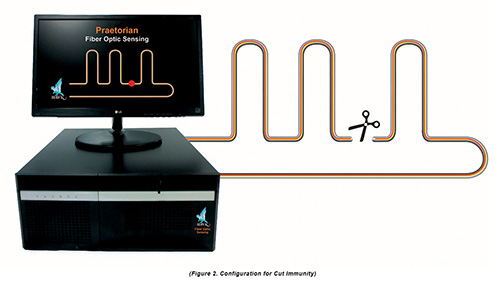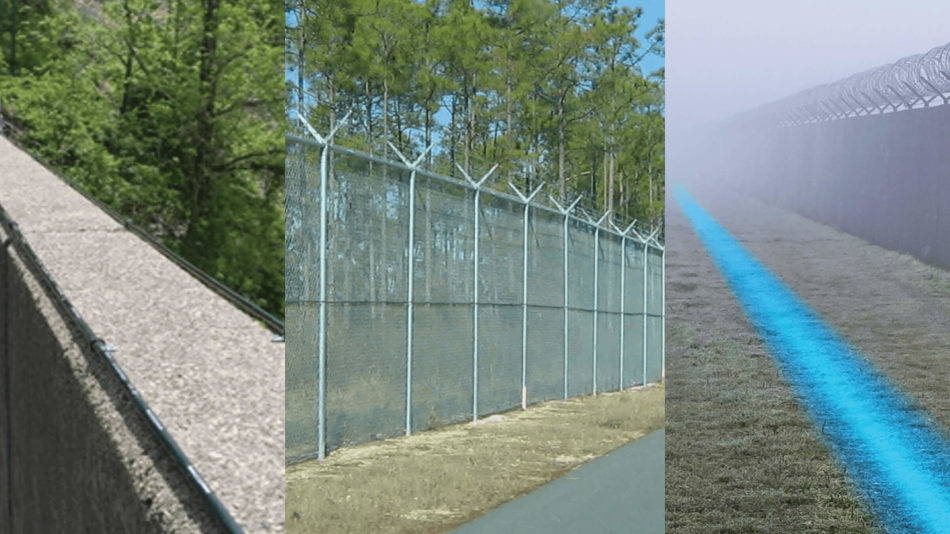How Fiber Security Helps Prevent Unauthorized Access and Improves Surveillance
How Fiber Security Helps Prevent Unauthorized Access and Improves Surveillance
Blog Article
Improve Your Safety And Security With Advanced Fiber Optic Security Systems
In an age where safety is vital, sophisticated fiber optic safety systems offer an engaging remedy for improving safety and security across various atmospheres. What ramifications do these innovations hold for future protection actions?
Advantages of Fiber Optic Safety And Security
Using the advantages of fiber optic technology considerably enhances security systems throughout different applications. One of the primary advantages is the raised bandwidth ability, enabling for the transmission of huge quantities of data at high rates. This is especially vital for real-time video clip security, where high-resolution feeds can be sent without latency, guaranteeing instant feedback abilities.
In addition, optical fiber exhibit superior resistance to electro-magnetic disturbance, which is essential in settings with prospective signal disruptions. This integrity makes certain constant performance in crucial safety and security procedures. Fiber optic cords are much less susceptible to tapping and unapproved accessibility contrasted to typical copper wiring, thus improving data stability and confidentiality.
One more significant benefit is the longevity of fiber optic systems; they are extra immune to environmental elements such as wetness, temperature changes, and corrosive materials. This resilience converts to decrease upkeep costs and longer lifespans for safety installments.
Finally, the light-weight nature of fiber optic cables facilitates easier installment and directing, particularly in complex facilities (fiber optic security system). Ultimately, the assimilation of fiber optic innovation right into safety systems not only bolsters security procedures but also maximizes functional effectiveness
Secret Features to Consider
When examining fiber optic safety systems, a number of essential functions have to be considered to ensure ideal performance and performance. Initially, evaluate the system's discovery array and sensitivity; a considerable array permits for keeping an eye on large locations, while high sensitivity ensures that also small disturbances are discovered immediately.
Next, consider the integration capacities of the system. A fiber optic protection system ought to seamlessly interface with existing safety actions such as cameras and alarms, developing a cohesive safety and security network.
Toughness and ecological resistance are also essential functions. Make sure that the system is created to withstand rough weather and possible physical hazards, as this will certainly prolong its functional life expectancy.

Finally, explore the scalability of the system. A durable fiber optic safety system must be quickly expandable to suit future requirements without substantial overhauls. By very carefully considering these functions, you can select a fiber optic safety option that enhances safety and security and protection in your environment.
Setup Process Review
To successfully apply a fiber optic safety system, a methodical setup process is important. This process starts with a detailed website analysis to establish the details safety and security demands and to identify ideal areas for fiber optic wires and safety gadgets. Following this evaluation, the setup team will establish a thorough strategy, including cable pathways, needed devices, and compliance with local regulations.
Next, the installation includes laying the fiber optic wires, ensuring they are safeguarded from environmental aspects and physical damages. Correct handling techniques are crucial, as fiber optic cords are delicate and can be conveniently harmed. After the cabling is mounted, adapters and discontinuations are meticulously completed to guarantee signal stability.
The go to my blog succeeding stage includes installing protection gadgets such as video cameras, motion detectors, and alarm, all incorporated with the fiber optic network. Rigorous screening is carried out to verify that all parts are operating properly and to ensure optimum performance.

Contrasting Fiber Optic to Typical Equipments
The development of safety innovation has led to substantial improvements in the comparison between fiber optic systems and traditional copper-based systems. Fiber optic systems utilize light to send data, offering premium transmission capacity and speed compared to their copper equivalents. This leads to enhanced information transmission abilities, making fiber optics ideal for high-resolution video clip monitoring and real-time monitoring.
Additionally, fiber optic wires are immune to electromagnetic disturbance, minimizing the likelihood of signal destruction triggered by outside factors. This particular guarantees consistent efficiency, even in tough environments. On the other hand, conventional copper systems are more prone to interference, bring about prospective susceptabilities in safety applications.
Durability is an additional advantage of fiber optic systems. They are less susceptible to harm from environmental factors such as dampness and temperature variations, which can compromise copper electrical wiring. Furthermore, fiber optics are lighter and thinner, permitting easier setup and lowered physical footprint.
Nonetheless, conventional systems have a tendency to have reduced first costs, making them appealing for budget-conscious jobs. While fiber optic systems might call for a higher upfront investment, their long-lasting advantages-- such as reduced upkeep prices and greater reliability-- typically surpass the first expenditure, positioning them as a superior choice for modern safety and security requirements.
Future Patterns in Safety Modern Technology
Arising fads in security modern technology are positioned to change the landscape of security and threat discovery - fiber optic security system. As companies significantly encounter innovative hazards, technologies such as expert system (AI) and equipment understanding (ML) are coming to be hop over to here indispensable to protection systems. These modern technologies improve the ability of fiber optic systems by allowing real-time data evaluation, recognizing abnormalities, and automating actions to prospective breaches
Additionally, the assimilation of the Web of Things (IoT) is transforming safety and security frameworks. IoT devices can give thorough situational recognition and promote smooth communication between various protection elements. This interconnectedness permits more reliable tracking and faster event response times.
Biometric verification is likewise gaining energy, offering a greater level of security with distinct physical features. As this innovation evolves, it is most likely to be incorporated right into fiber optic systems for improved accessibility control.
Final Thought
In verdict, advanced fiber optic safety and security systems represent a substantial innovation in safety and surveillance innovation. The change from basics typical systems to fiber optic solutions reflects a growing trend towards much more effective and efficient safety actions in a significantly intricate technical landscape.
Report this page